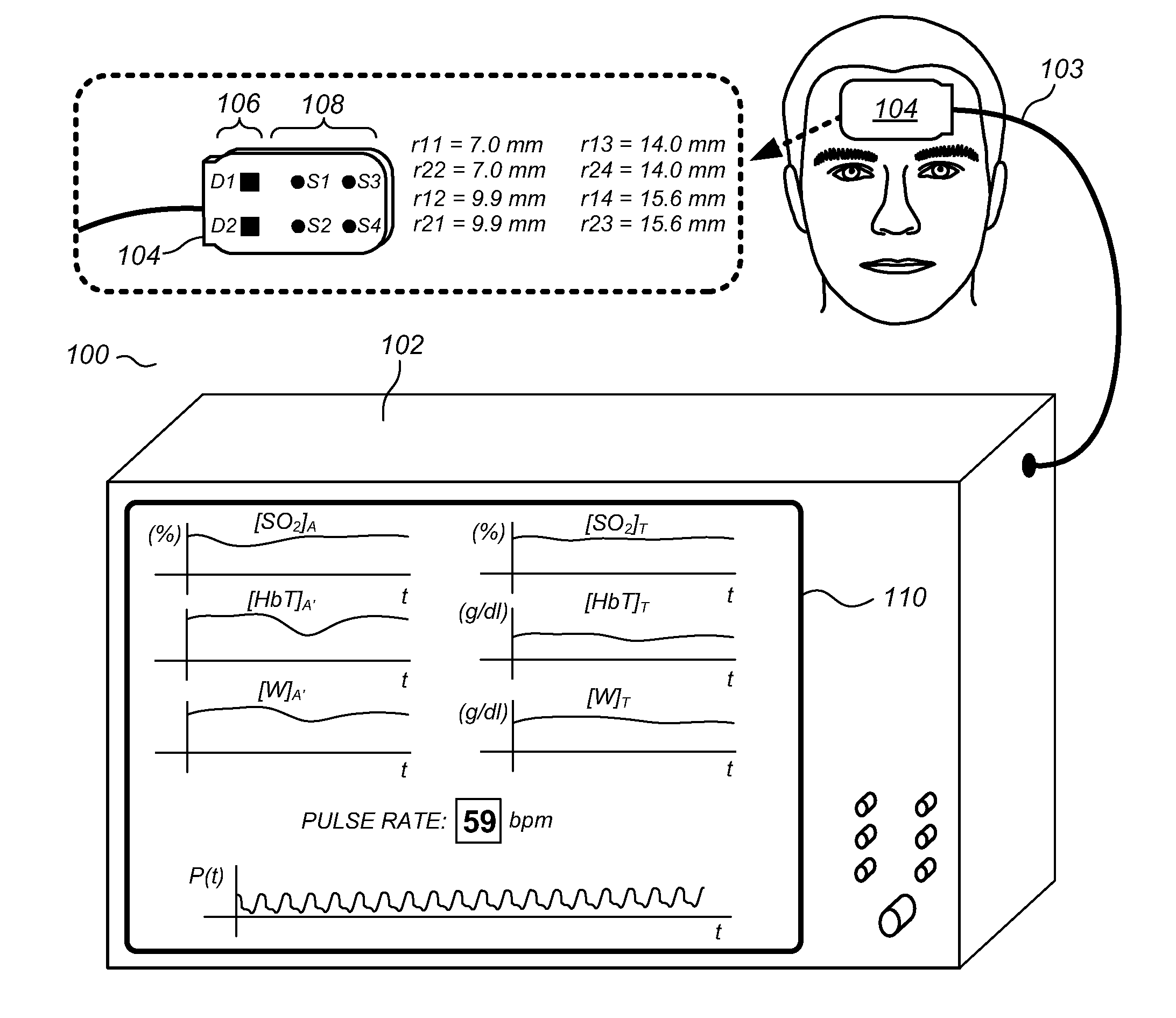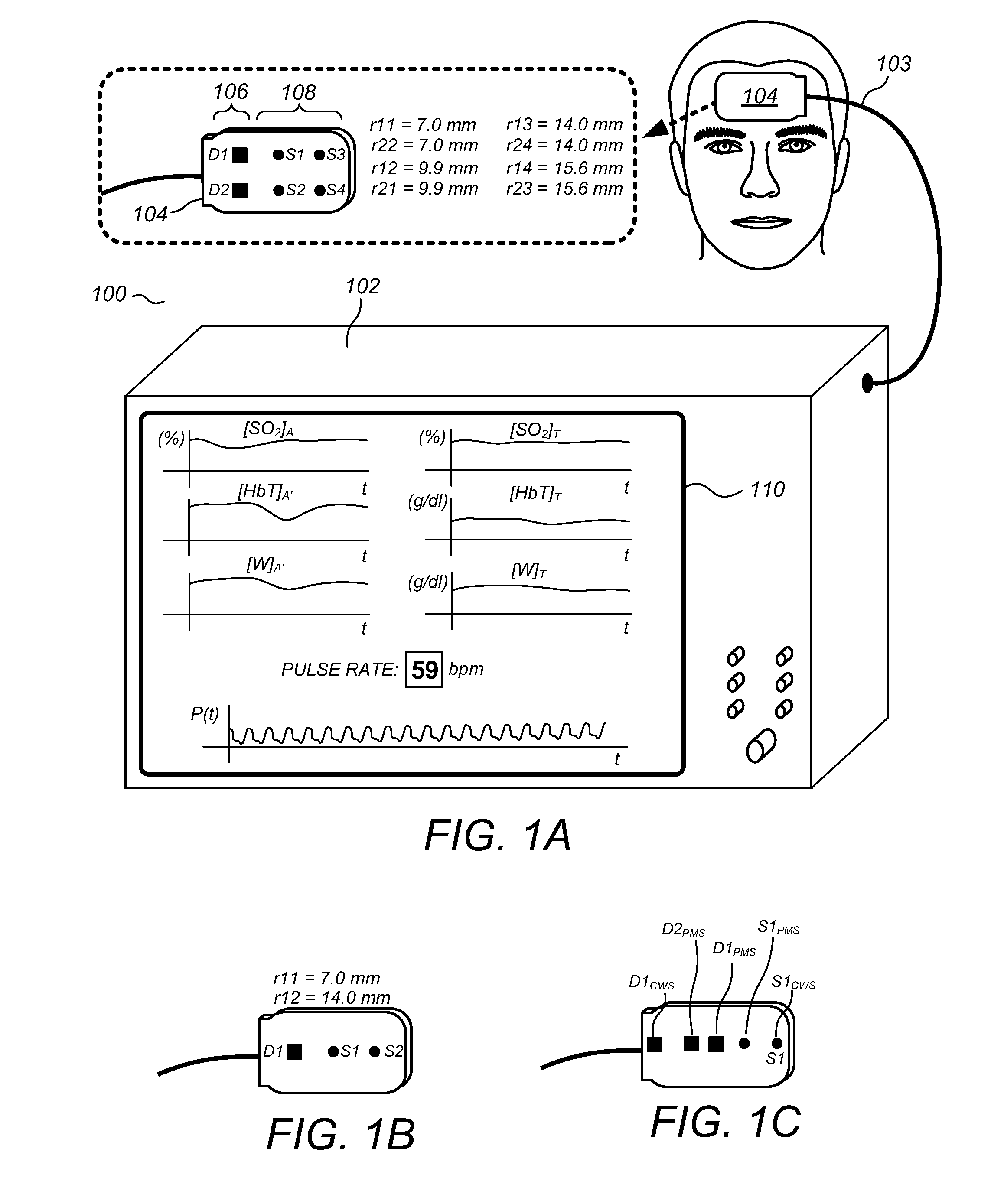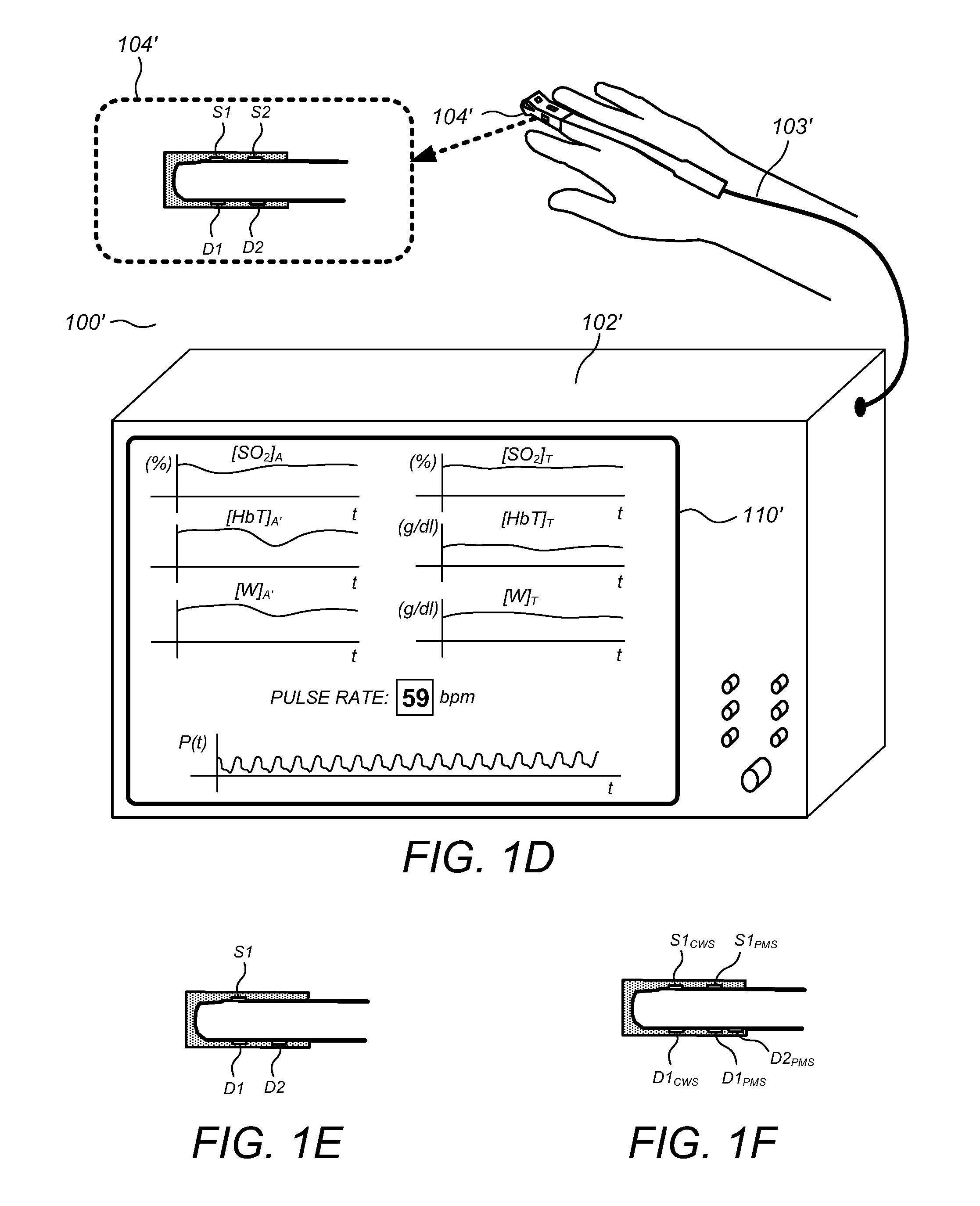Hybrid spectrophotometric monitoring of biological constituents
a biological constituent and hybrid technology, applied in the field of non-invasive monitoring, can solve the problems of a large amount of spectrophotometric data, and a large amount of spectrophotometric data, and achieve the effect of improving monitoring and high modulation ra
- Summary
- Abstract
- Description
- Claims
- Application Information
AI Technical Summary
Benefits of technology
Problems solved by technology
Method used
Image
Examples
Embodiment Construction
[0031]FIG. 1A illustrates an example of continuous, real-time, non-invasive total hemoglobin concentration [HbT] monitoring according to a preferred embodiment. Without loss of generality, for one preferred embodiment, the biological volume under study is modeled as consisting of a pulsatile (“arterial”) blood compartment “A” and a non-pulsatile (“tissue”) compartment “T”. The pulsatile compartment “A” and the tissue compartment “T” are modeled as each consisting of “M” chromophores. The number of chromophores M should be at least three, including a first chromophore that is oxygenated hemoglobin (HbO), a second chromophore that is deoxygenated hemoglobin (Hb), and a third chromophore that is water (W). As used herein, the symbols [HbO]A, [Hb]A, and [W]A represent the respective concentrations of oxygenated hemoglobin, deoxygenated hemoglobin, and water in the arterial blood compartment, while the symbols [HbO]T, [Hb]T, and [W]T represent the respective concentrations of oxygenated ...
PUM
 Login to View More
Login to View More Abstract
Description
Claims
Application Information
 Login to View More
Login to View More - R&D
- Intellectual Property
- Life Sciences
- Materials
- Tech Scout
- Unparalleled Data Quality
- Higher Quality Content
- 60% Fewer Hallucinations
Browse by: Latest US Patents, China's latest patents, Technical Efficacy Thesaurus, Application Domain, Technology Topic, Popular Technical Reports.
© 2025 PatSnap. All rights reserved.Legal|Privacy policy|Modern Slavery Act Transparency Statement|Sitemap|About US| Contact US: help@patsnap.com



